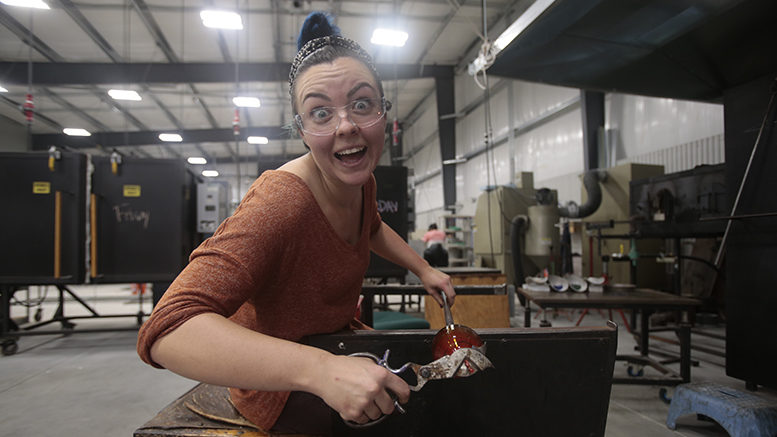- Alumna takes on competitors in Netflix’s ‘Blown Away’
- Research to examine closures on persistence, completion
Alumna takes on competitors in Netflix’s ‘Blown Away’
The second season of a reality-based Netflix program where glassblowers compete for cash prizes includes an alumna of New Jersey’s Salem Community College (SCC), which is renowned for its glass-art program.
In the second season of “Blown Away,” which premiered January 22, Cat Burns is among 10 master artists aiming to best the completion and win $60,000 in prizes.
It’s not the first time someone from SCC has been on the show. Salem adjunct glass art instructor Alexander Rosenberg appeared in Season 1 and serves as a guest judge in the new season.
Related article: New Jersey’s link to the international glass community
Burns now lives in Corning, New York, where she creates her exquisite art and sells it online at catburnsglass.com and wholesale through other stores. “In non-Covid times, I would also travel as a teacher,” she added.
And what does the artist look forward to the most each day? “As my own boss, I get to spend most of my day in pajamas with my dog, making absolute bank while dancing in my studio,” she said. “I get to decide when to take cookie breaks, when to take vacation and I get all the mental health days I need.”
Community colleges and their students and faculty have over the years appeared on several reality-based Netflix programs, including “Last Chance U,” “Cheer,” “Sugar Rush” and others.
Bill Clark, director of public relations at Salem Community College, contributed to this article.
Research to examine closures on persistence, completion
The State Higher Education Executive Officers Association (SHEEO) and the National Student Clearinghouse (NSC) Research Center will embark on a research project to quantify the effects of college closures on student persistence and completion.
With funding from Arnold Ventures, SHEEO and the NSC Research Center over the next two years will use myriad tools and methods to examine what happens to students.
“Rigorously and thoroughly quantifying the impacts of college closure on subsequent postsecondary outcomes will inform what has been a contentious policy debate around appropriate regulatory action meant to prevent, prepare for, and respond to college closures in a pandemic where more closures are expected to occur,” according to a press release from NSC.
The organizations plan to release three reports regarding the effects on student outcomes and create a website to house interactive data and aggregated data that will be shared.
According to Doug Shapiro, executive director of the NSC Research Center, the research will examine many questions, such as whether students disengage from higher education entirely, if students who drop out return later, whether they enroll at different institutions and more.
“We’re not only going to have descriptive answers, but also we’re going to have causal estimates of their impact that will help policymakers and researchers,” he said.

